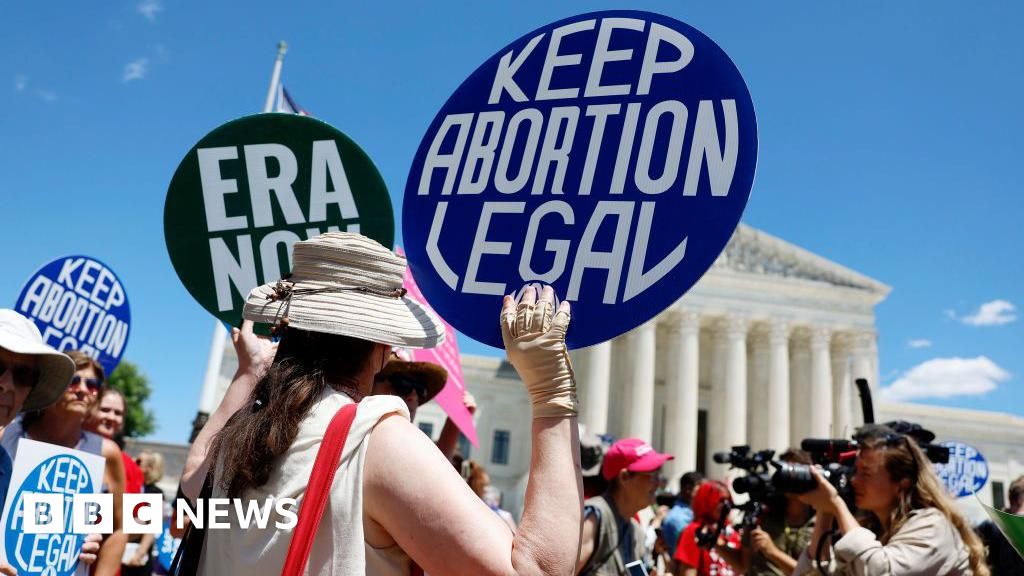
Study Reveals Increased Infant Mortality Rates Linked to Abortion Restrictions in U.S. States
Recent research indicates a concerning rise in infant mortality rates in U.S. states that have implemented abortion bans. The study highlights that an estimated 478 infant deaths across 14 states—those with outright prohibitions or significant restrictions—likely would not have occurred had these laws not been enacted.
The increase is associated with the U.S. Supreme Court’s 2022 decision to overturn a previous ruling that recognized abortion as a national right until fetal viability, thus allowing individual states to establish their own abortion regulations. According to Alison Gemmill, a co-author of the study, these "restrictive abortion policies" pose a threat to the significant progress made over recent decades in lowering infant mortality rates nationwide.
Published this week by researchers from Johns Hopkins Bloomberg School of Public Health, the study reveals a notable rise in mortality rates for infants with congenital conditions, as well as for demographic groups that already experienced above-average death rates. This includes black infants and babies born to parents who are unmarried, younger, or without a college education, particularly in Southern states.
As of January 2025, 17 states have enacted near-total abortion bans, with certain exceptions for cases of rape, incest, or maternal health concerns. States with complete bans include Idaho, Alabama, Arkansas, Indiana, Kentucky, Louisiana, Mississippi, Oklahoma, South Dakota, Tennessee, Texas, and West Virginia. Additionally, states like Florida, Georgia, Iowa, and South Carolina have restricted the procedure to six weeks of pregnancy, while Nebraska and North Carolina impose a 12-week limit, and Utah has an 18-week cutoff.
Sarah Corning, a staff attorney at the ACLU of Texas, remarked that healthcare professionals had warned of rising infant mortality following these restrictive measures. She highlighted that many obstetricians are leaving Texas due to challenges posed by the laws, which adversely affect their ability to provide appropriate care, ultimately impacting the health outcomes of Texans and their infants.
The data shows that in states with these newly imposed laws, the infant mortality rate escalated to 6.26 per 1,000 live births, surpassing the expected rate of 5.93 per 1,000—indicating a relative increase of 5.6%. Comparatively, the UK reports an infant mortality rate of approximately 3.8 per 1,000 live births, while countries like Slovenia, Singapore, and Iceland enjoy some of the lowest rates globally, ranging from 1.5 to 1.6 deaths per 1,000 live births. Afghanistan holds the highest rate, with an estimated 101.3 deaths per 1,000 live births.
The study also uncovered an increase in infant deaths related to congenital anomalies, rising from an anticipated rate of 1.24 per 1,000 live births to 1.37, marking a 10.87% relative increase, while mortality from other causes climbed to 4.89 per 1,000 from an expected 4.69, a 4.23% rise. Among non-Hispanic black infants, the death rate was 11.81 per 1,000 live births post-ban, compared to an expected 10.66, reflecting an increase of nearly 11%.
The research associates the heightened rates of infant mortality due to congenital disorders with women being denied abortions in instances of non-viable pregnancies. However, the escalation linked to non-congenital causes remains complex, according to the researchers.
Furthermore, the findings suggest that these bans are likely to disproportionately affect vulnerable populations already at higher risk for infant mortality and may hinder timely access to medical care. Corning emphasized that the current legal framework forces individuals to carry pregnancies with fatal abnormalities to term, often resulting in stillbirth or the loss of their infant shortly after birth. She remarked, "It is shameful that our states’ laws create such unnecessary physical and emotional harm."
Additional research from the Johns Hopkins Bloomberg School of Public Health suggests that abortion restrictions may also correlate with rising fertility rates. Following the nullification of Roe v. Wade, the number of live births per 1,000 women of reproductive age in affected states climbed by 1.7%, translating to an increase of 22,180 births. The largest differences in fertility were observed in states experiencing some of the most significant maternal and child health challenges.









